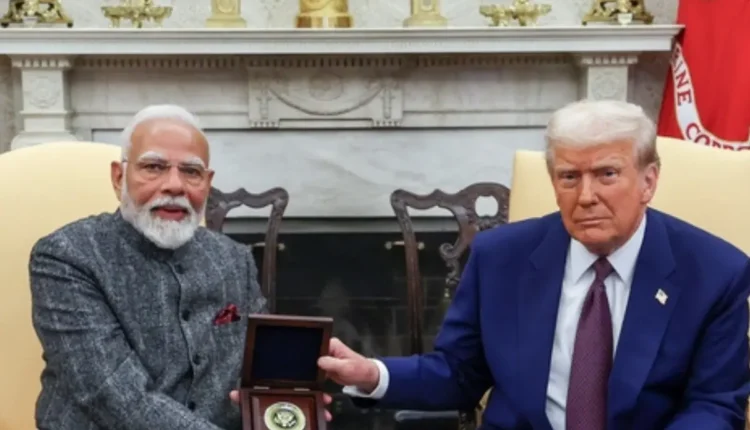India’s Exports to the US Face 27% Tariff: Challenges & Opportunities
US Tariffs on India: How the 27% Duty Compares to Other Asian Nations
Starting next week, Indian exports to the United States will be subjected to a 27% tariff. While this rate is considerably lower than the duties imposed on other Asian nations, including China, Thailand, Vietnam, and Bangladesh, it still presents both challenges and opportunities for Indian industries.
China, in particular, will face a substantial blow, with a 34% reciprocal tariff on top of an earlier 20% duty. Similarly, Vietnam, Thailand, and Bangladesh have been slapped with even higher tariffs of 46%, 37%, and 37%, respectively.
Despite the tariff hike, industry experts believe that India may find avenues for growth, especially in segments like textiles and apparel, where competitors like Bangladesh and Vietnam may become less competitive due to higher levies.
Impact of the 27% Tariff on Indian Exports
1. The Electronics and Mobile Phone Sector
India’s electronics industry, particularly mobile phone exports, may face significant headwinds. The country has seen exponential growth in mobile phone exports, crossing $6 billion, largely due to Apple’s local assembly of iPhones. However, with critical components still being imported from China, South Korea, and Taiwan—nations that are also facing heavy tariffs—India’s competitiveness in this sector might take a hit.
However, with higher tariffs on Vietnam and Thailand, India has a unique chance to attract new manufacturing facilities and consolidate its position as a leading electronics hub.
2. Gems and Jewellery: A Precious Challenge
The gems and jewellery sector, which makes up 13% of India’s exports to the US, is expected to experience short-term disruptions. India accounts for nearly 30% of America’s jewellery imports, with major exporters like Rajesh Exports, Titan, Kalyan Jewellers, and Tribhovandas Bhimji Zaveri relying heavily on the US market.
A 27% tariff could make Indian jewellery more expensive for American buyers, potentially reducing demand. However, if India strengthens its supply chain and enhances value addition, it may mitigate some of these negative effects.
3. Textiles and Apparel: A Strategic Opportunity
India’s textile and apparel industry could be one of the biggest beneficiaries of the new tariff structure. Countries like Bangladesh, Vietnam, and Sri Lanka have been dominant players in this space due to their cost advantages. However, with these nations facing tariffs as high as 37%-46%, Indian textile manufacturers, including Gokaldas Exports and Arvind, have an opportunity to capture a larger market share in the US.
According to Ajay Srivastava, founder of the Global Trade Research Initiative, “The high tariffs on China and Bangladesh create room for Indian textile manufacturers to gain market share, attract relocated production, and increase exports to the US.”
4. Pharmaceuticals: A Temporary Relief
India’s pharmaceutical industry, which accounts for 10% of exports to the US, remains unaffected for now. However, experts warn that the Trump administration could introduce sector-specific tariffs in the future. Indian pharmaceutical giants like Lupin, Cipla, Sun Pharma, Dr Reddy’s, and Gland Pharma will need to monitor the situation closely to avoid potential disruptions.
5. Steel, Aluminium, and Auto Parts
Steel, aluminium, and auto parts exporters will be directly hit by the 25% tariff. However, some companies like Samvardhana Motherson and Sona BLW, which have manufacturing facilities in Mexico, may find relief through the US-Mexico free trade arrangement.
Broader Economic Implications
The new tariffs are expected to have ripple effects across the global economy. Analysts from Emkay Global Financial Services estimate that India’s exports to the US could decline by $30-33 billion, equivalent to 0.8-0.9% of GDP.
Madhavi Arora, Chief Economist at Emkay Global, stated, “China’s response to these tariffs will be crucial for India. Excess Chinese industrial capacity could lead to dumping in Asian markets, potentially disrupting domestic industries.”
Additionally, heightened tariffs could force businesses to delay investments due to concerns about reduced demand and increased competition from diverted Chinese exports.
Navigating the Future: India’s Response
Assocham President Sanjay Nayar believes India can use this moment to strengthen its trade and manufacturing capabilities. “Our industry should make concerted efforts to increase export efficiency and value addition to mitigate the impact of these tariffs,” he said.
While the US remains India’s largest export destination, accounting for 18% of total shipments, trade experts argue that deeper structural reforms are needed to capitalize on emerging opportunities. Increasing domestic value addition, enhancing production scale, and improving trade logistics could help India become a more competitive global exporter.
Also Read : H-1B Visa Lottery 2026 Results: What’s Next for Unselected Applicants?

